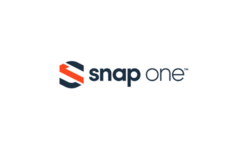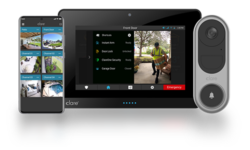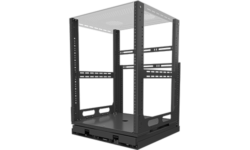Why Smart Access Control Manufacturers Must Pick Up the Pace
Manufacturers must be more agile, respond faster to changing market conditions and get new features to consumers faster than the organization may be able to move.

(Image: zhu difeng/stock.adobe.com)
Whether established market leaders or start-ups, smart access control product and system manufacturers are under constant pressure to keep innovating.
Pace of Innovation
For traditional manufacturers, keeping up with the pace of smart product innovation is a challenge. Product lifecycles for smart products — which demand software updates, new connectivity standards, sensor integration and cybersecurity patches — are dramatically shorter than traditional, unconnected or locally networked solutions.
Manufacturers must be more agile, respond faster to changing market conditions and get new features to consumers faster than the organization may be able to move.
The constant push to develop the next generation of products leads companies down two paths: acquiring innovation or building it in-house. Brands lacking the capital or desire to make major acquisitions are investing in internal product development, looking for incremental innovation that improves each product generation.
Ability to Scale
However, the smart lock and smart access control market has shown substantive growth and transformational change over the past five years, expanding well beyond early capabilities. More than 10 new brands have entered the space in just the past two years.
This means that each individual brand has to build competency in-house on all aspects of lock performance — mechatronic functions, sensors, authentication, communication, privacy and security controls, and integration with other connected products and platforms, among others.
While the acquisition path of buying product innovation is quite expensive, the alternative approach of independently developing knowledge and investing in R&D in-house carries its own inefficiencies and leads to a fragmented market landscape. It is possible that these traditional and dominant approaches to product development for smart door locks — and the smart home market generally — are holding back the industry’s ability to scale.

Innovation Without Fragmentation: Benefits of Tier-1 Suppliers
The exact structure of industry supply chains naturally vary by industry, based on market needs, strategies of market leaders, and the legacy of a market’s historical development. The smart door lock and smart access control product industries have developed such that both established and start-up OEMs do the vast majority of R&D, product iteration, manufacturing and assemblage of distinct components themselves.
Other industries have developed a supply chain tier between components suppliers and the OEM that offloads much of this work – commonly referred to as Tier-1 suppliers.
The auto industry is among the most recognized Tier-1 supply chain structure. Companies like Continental, Bosch, Denso, Panasonic Automotive and Magna, among others, design and develop whole systems or modules for a vehicle, while sourcing individual components for the system from farther up the supply chain.
The auto OEM focuses on the overall design of their vehicles, assembly of various vehicle systems, balance of their product portfolios, product marketing, developing sales strategies and other mission-critical tasks.
More mature industries that leverage a Tier-1 supply structure aim to realize a variety of benefits:
- More cost-effective R&D: Most companies are limited in how many projects they can do at once; they can focus on mission-critical things, and everything else is a nice-to-have or just goes to the wayside. A Tier 1 structure allows companies to outsource research and development time and costs to specialists, which can extend and broaden projects/deployments.
- Rapid pivots: The smart door lock and smart access control market – like the smart home market generally – innovates at an extremely rapid pace compared to the traditional manufacturing lifecycle. Tier 1 suppliers help OEMs operate on a more agile timeframe and respond to changing market conditions more quickly.
- Circulate knowledge – Tier 1s develop competency on leading-edge technologies and approaches by serving OEMs with varying product specifications and visions. They then serve as a clearinghouse of knowledge, advancing the whole industry, and saving OEMs from having to individually build redundant competencies in-house.
- Take the pain out of interoperability – Devices typically evolve in common stages of IoT development, and as IoT development advances from single device/apps in multiple ecosystems, companies need to make business decisions about investing in interoperability. In an industry where multiple leading protocols have attracted and developed a sizable, sustainable ecosystem, the best hope for broader interoperability rests in bridging technologies that can enable ecosystems of ecosystems. Those technologies include voice control and their requisite API integrations, open platforms that provide a common language, and application layer initiatives.
As the market matures, business models will have to account for these multi-ecosystem integrations and the cost of creating and maintaining them. A Tier 1 structure allows suppliers to handle integrations and build on new standards like Matter or directly as needed and removing the stress of these developments from the OEM.
For the smart access industry to leverage the same benefits of a Tier-1 supply structure, several critical factors would be necessary for success.
First, a Tier-1 supplier class must demonstrate the competency needed to gain the trust and confidence of established brands to outsource work previously done in house. Suppliers also must demonstrate a high level of responsiveness to deliver on the rapid product lifecycle timelines that smart product development demands.
Finally, OEMs and their Tier-1 suppliers must practice tight collaboration to ensure critical objectives are met.
Jennifer Kent is VP, Research at Parks Associates
SSI has partnered with Parks Associates for the creation of DIY FYI, a column designed to help dealers keep track of important smart home market developments, what the competition is and whether they want to jump into something they see as a new opportunity.
This is an excerpt from Parks Associates whitepaper “Smart Locks and Access Control Supply Chain: Scaling Innovation,” in collaboration with Passivebolt. For more information on market trends in the home security space, please visit www.ParksAssociate.com.
If you enjoyed this article and want to receive more valuable industry content like this, click here to sign up for our FREE digital newsletters!

Security Is Our Business, Too
For professionals who recommend, buy and install all types of electronic security equipment, a free subscription to Commercial Integrator + Security Sales & Integration is like having a consultant on call. You’ll find an ideal balance of technology and business coverage, with installation tips and techniques for products and updates on how to add to your bottom line.
A FREE subscription to the top resource for security and integration industry will prove to be invaluable.







